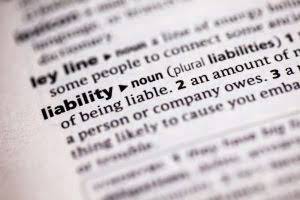
It provides a structured approach to compare and rank options, considering different dimensions such as cost, time, quality, and sustainability. The Delphi Method helps leverage collective wisdom, minimize biases, and generate well-informed decisions, particularly in complex or uncertain situations. This method is particularly beneficial in brainstorming sessions, team meetings, and problem-solving scenarios, where considering multiple perspectives can lead to innovative solutions and effective decisions. Lastly, you can’t make the best decision if you’re starting from a flawed position. As the project manager or product owner, you’ll be responsible for making calls that impact your team, company, and industry. Adding your decision to a project management tool like Planio is a great way to document it for everyone across the company.
Recommenders and Search Tools

This relatively new tool was introduced by Gil Shklarski, a CTO at Flatiron Health in the past and an experienced startup mentor. When working at Flatiron Health, Gil noticed that many talented specialists didn’t want to enter C-level positions. They were wary of the high pressure connected with decision-making and negotiating these decisions with colleagues.
When to use RAPID decision-making model?
This is a key question because the degree to which responsibility for a decision is shared can greatly influence how much risk people are willing to take. To come up with a list of all the possible solutions and/or options available it is usually appropriate to use a group (or individual) problem-solving process. This process could include brainstorming or some other ‘idea-generating’ process. Both individuals and organizations that work with arXivLabs have embraced and accepted our values of openness, community, excellence, and user data privacy. ArXiv is committed to these values and only works with partners that adhere to them. The Nursing and Midwifery Board of Australia (NMBA) frameworks support safe professional practice, by guiding assessment and decision-making and assessment.
Fix these common onboarding challenges to boost productivity
To our knowledge, no competency frameworks are currently aimed at public health professionals focussed on using simulation modelling to support decision-making. The key outstanding challenges are representing two idealized profiles of Modeller and Facilitator within the competency framework and differentiating levels of expertise. We believe an integrated competency framework is more appropriate for informing general graduate-level public health education. By contrast, a more specialized framework focussed on one of the profiles may be better suited for post-graduate specialization. Second, while the current study aimed to formulate competencies for a recent MPH graduate level, we concur with the need to extend the present work to encompass more advanced levels of expertise.
- Most of us are eager to tie on our superhero capes and jump into problem-solving mode — especially if our team is depending on a solution.
- In today’s world, there is the added complexity that many decisions (or parts of them) can be “delegated” to smart algorithms enabled by artificial intelligence.
- But you can’t solve a problem until you have a full grasp on what it actually is.
- By understanding cause-and-effect relationships, such frameworks help organizations optimize their decision-making processes and achieve better outcomes.
- Effective product managers understand how to incorporate empathy into product management, which allows them to support customers needs.
Design Thinking
Having to make a decision alone is work enough, you don’t need to add a mathematical equation to it to make things worse. There are loads of ways to grow a company – learn about our approach here. Deciding whether you should order tacos or sandwiches for your team offsite doesn’t warrant this much discussion and elbow grease.
- They receive updates but are not active participants in the project or decision.
- For example, a project manager’s role is to execute the plan, but they can also help during the input stage with a cost-benefit analysis of an initiative.
- Tools for data analytics transform vast amounts of data into actionable insights, facilitating more informed and accurate decisions.
- This is because you don’t have enough experience to quickly recognize patterns yet.
- In this matrix, each row is for a particular task, and there is a column for each person/role in the organization (i.e. project manager, engineering manager, developer, sales executive).
Many decision-making frameworks aim to help leaders use objective information to mitigate bias, operate under time pressure, or leverage data. But these frameworks tend to fall short when it comes to decisions based on subjective information sources that suggest conflicting courses of action. However, settling on the best course of action is often easier said than done. When instinct and reasoning alone aren’t enough to decision making framework pinpoint the best decision out of your available options, it can often be helpful to utilize a decision-making model. Decisions made in a vacuum can suffer from a lack of context as they don’t take advantage of the strengths and perspectives of an organization’s individuals. In my many years at Google, I saw Eric Schmidt use this approach to decision-making on a regular basis — probably without even thinking about it.
TDODAR Decision Model
The approver doesn’t have to provide input on every detail (unless they want to), but they should be informed enough to make good decisions. The driver should ensure the approver has enough context and information to do so. The driver is probably doing https://www.bookstime.com/ the most documentation and communication of anyone involved in the decision-making process. The driver is not the only one doing work, but they are the person ensuring progress doesn’t stall and that any next steps are clear to everyone else involved.
After the two screening steps, we included 28 records in the data extraction and synthesis process. Finally, we extracted and synthesized data from 28 articles (see Supplementary material). The study combined a literature review, a two-stage online Delphi survey and an online consensus workshop. A draft competency framework was developed based on 28 peer-reviewed publications. A two-stage online Delphi survey involving 15 experts was conducted to refine the framework.